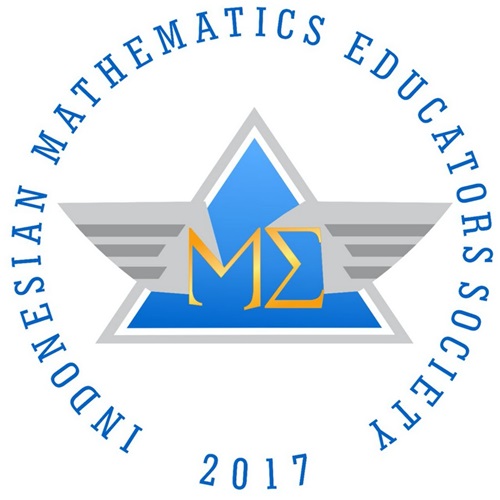Students’ Mathematical Representation in Resource-based Learning Model Assisted by Google Classroom
DOI:
https://doi.org/10.22437/edumatica.v14i2.31751Keywords:
google classroom, mathematical representation, resource-based learningAbstract
Mathematics is a subject rich in representations, ranging from tables, diagrams, symbols, physical, to verbal. In the realm of mathematics, students are required to master all of these types of representations. To facilitate learning encompassing all of these representations, various structured materials and references are necessary. The objective of this research was to determine the extent of improvement in mathematical representation among students who received Model Resource-based Learning aided by Google Classroom. The research method employed was quasi-experimental. Sample of this study were students of grade XI in the academic year 2021/2022 at one high school in Bandung. Purposive sampling technique was used for sample selection. The research sample was selected based on available classes, ensuring that both classes had equivalent initial capabilities. One class then became the experimental group, while the other class served as the control group. The research instrument was a test of mathematical representation ability. Based on the data analysis, the improvement in mathematical representation ability among students in the experimental group was higher compared to students in the control group. It was also found that despite being provided with resources in Google Classroom, students' verbal representations were still lacking and remained the lowest type of representation besides physical representation.
Downloads
References
Alifa, K. R., Araiku, J., Yusup, M., & Pratiwi, W. D. (2022). Students Mathematical Representation Ability in Solving Numeracy Problem through Problem Based Learning. Journal of Medives : Journal of Mathematics Education IKIP Veteran Semarang, 6(1). https://doi.org/10.31331/medivesveteran.v6i1.1936
Boaler, J., & Sengupta-Irving, T. (2016). The many colors of algebra: The impact of equity focused teaching upon student learning and engagement. Journal of Mathematical Behavior, 41. https://doi.org/10.1016/j.jmathb.2015.10.007
Desai, S., Bush, S. B., & Safi, F. (2021). Mathematical Representations in the Teaching and Learning of Geometry. Electronic Journal for Research in Science & Mathematics Education, 25(4).
Duval, R. (2006). A cognitive analysis of problems of comprehension in a learning of mathematics. Educational Studies in Mathematics. 61(1). https://doi.org/10.1007/s10649-006-0400-z
Fatimah, A, H., & Nurlyana. (2021). Pengaruh Pendekatan Resource-Based Learning terhadap Kemampuan Penalaran dan Pembuktian Matematis Siswa Kelas X MIPA SMA Negeri 1 Wonomulyo. JPMI: Jurnal Pembelajaran Matematika Inovatif, 4(2).
Haleem, A., Javaid, M., Qadri, M. A., & Suman, R. (2022). Understanding the role of digital technologies in education: A review. Sustainable Operations and Computers, 3. https://doi.org/10.1016/j.susoc.2022.05.004
Hapsari, S. A., & Pamungkas, H. (2019). Pemanfaatan Google Classroom Sebagai Media Pembelajaran Online di Universitas Dian Nuswantoro. Wacana: Jurnal Ilmiah Ilmu Komunikasi, 18(2). https://doi.org/10.32509/wacana.v18i2.924
Izzatin, M., Waluyo, S. B., Rochmad, & Wardono. (2020). Students’ cognitive style in mathematical thinking process. Journal of Physics: Conference Series, 1613(1). https://doi.org/10.1088/1742-6596/1613/1/012055
Jumri, R., & Murdiana, M. (2022). Kemampuan Representasi Matematis Siswa dengan Resource-Based Learning. Aksioma, 11(1). https://doi.org/10.22487/aksioma.v11i1.1901
Kononets, N. (2015). Experience in implementing resource-based learning in Agrarian college of management and law poltava state Agrarian academy. Turkish Online Journal of Distance Education, 16(2). https://doi.org/10.17718/tojde.38232
Kononets, N., Ilchenko, O., & Mokliak, V. (2020). Future teachers resource-based learning system: Experience of higher education institutions in poltava city, Ukraine. Turkish Online Journal of Distance Education, 21(3). https://doi.org/10.17718/TOJDE.762054
Lesh, R., Post, T., & Behr, M. (1987). Representations and Translations among Representations in Mathematics Learning and Problem Solving. In Problems of representations in the teaching and learning of mathematics.
Lutfi, J. S., & Dasari, D. (2023). Mathematical representation ability in view of self-efficacy: Systematic literature review. Mathline: Jurnal Matematika Dan Pendidikan Matematika, 8(2).
Mainali, B. (2021). Representation in teaching and learning mathematics. International Journal of Education in Mathematics, Science and Technology, 9(1), 1–21. https://doi.org/10.46328/ijemst.1111
Mullis, Martin, & Davier, V. (2021). TIMSS 2023 Assessment Framework. In TIMSS & PIRLS International Study Center, Lynch School of Education, Boston College.
NCTM. (2020). Standards for the Preparation of Secondary Mathematics Teachers. The National Council of Teachers of Mathematics, Inc., May.
Nidup, Y. (2022). Can Google Classroom be Used as an Alternative for Classroom Teaching? Shanlax International Journal of Education, 10(3). https://doi.org/10.34293/education.v10i3.4578
Parame-Decin, M. B. (2023). Visual Representations in Teaching Mathematics. Sprin Journal of Arts, Humanities and Social Sciences, 2(05). https://doi.org/10.55559/sjahss.v2i05.107
Pedersen, M. K., Bach, C. C., Gregersen, R. M., Højsted, I. H., & Jankvist, U. T. (2021). Mathematical representation competency in relation to use of digital technology and task design—a literature review. In Mathematics (Vol. 9, Issue 4, pp. 1–25). MDPI AG. https://doi.org/10.3390/math9040444
Pimm, D. (1990). Problems of representation in the teaching and learning of mathematics. Educational Studies in Mathematics, 21(1). https://doi.org/10.1007/bf00311018
Ramadhani, R., Umam, R., Abdurrahman, A., & Syazali, M. (2019). The effect of flipped-problem based learning model integrated with LMS-google classroom for senior high school students. Journal for the Education of Gifted Young Scientists, 7(2). https://doi.org/10.17478/jegys.548350
Ristiani, A., & Maryati, I. (2022). Kemampuan representasi matematis dan self-esteem siswa pada materi statistika. Jurnal Inovasi Pembelajaran Matematika: PowerMathEdu, 1(1). https://doi.org/10.31980/powermathedu.v1i1.1914
Sopian, Y. A., & Afriansyah, E. A. (2017). Kemampuan Proses Pemecahan Masalah Matematis Siswa melalui Model Pembelajaran Creative Problem Solving dan Resource Based Learning. Jurnal Elemen, 3(1).
Sudarsana, I. K., Putra, I. B. M. A., Astawa, I. N. T., & Yogantara, I. W. L. (2019). The use of Google classroom in the learning process. Journal of Physics: Conference Series, 1175(1). https://doi.org/10.1088/1742-6596/1175/1/012165
Utomo, D. P., & Syarifah, D. L. (2021). Examining mathematical representation to solve problems in trends in mathematics and science study: Voices from Indonesian secondary school students. International Journal of Education in Mathematics, Science and Technology, 9(3). https://doi.org/10.46328/IJEMST.1685
Yaniawati, P., Kariadinata, R., Sari, N. M., Pramiarsih, E. E., & Mariani, M. (2020). Integration of e-learning for mathematics on resource-based learning: Increasing mathematical creative thinking and self-confidence. International Journal of Emerging Technologies in Learning, 15(6). https://doi.org/10.3991/ijet.v15i06.11915
Zhou, Q., Lee, C. S., Sin, S. C. J., Lin, S., Hu, H., & Firdaus bin Ismail, M. F. (2020). Understanding the use of YouTube as a learning resource: a social cognitive perspective. Aslib Journal of Information Management, 72(3). https://doi.org/10.1108/AJIM-10-2019-0290
Downloads
Published
How to Cite
Issue
Section
License
Copyright (c) 2024 Agus Dede Anggiana, Thesa Kandaga

This work is licensed under a Creative Commons Attribution-NonCommercial-ShareAlike 4.0 International License.







